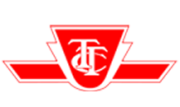Toronto’s urban forest is facing a persistent threat from a quiet yet destructive invader: the Spongy Moth (Lymantria dispar dispar). Formerly known as the Gypsy Moth - a name now retired due to cultural insensitivity - this pest is far more than a seasonal nuisance. It’s an invasive species that puts the health of trees across the GTA at serious risk. And unfortunately, it’s not going away anytime soon.

At Tree Doctors, we understand the serious threat this pest poses to our local canopy. That’s why our expert team takes a comprehensive, science-based approach to detect, manage, and prevent Spongy Moth infestations, working to protect not just your property, but the health of your entire neighbourhood.
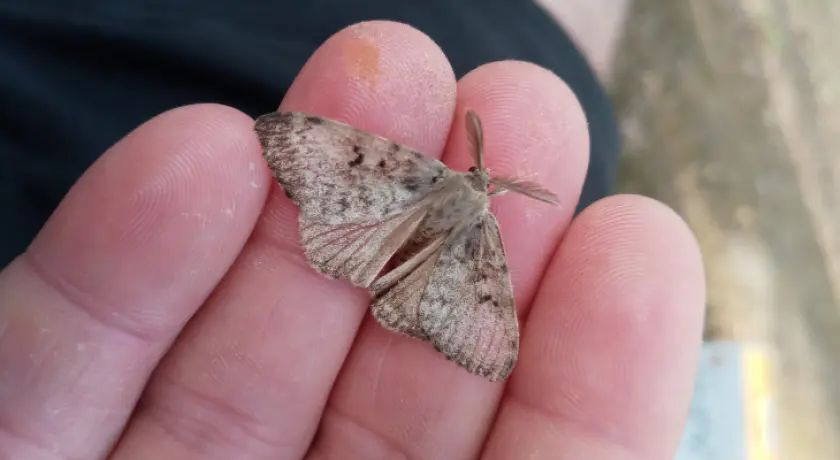
Why the Spongy Moth Is a Serious Problem
The Spongy Moth’s life cycle unfolds in four destructive stages, each one quietly preparing for the next assault on your trees:
|
Stage |
What to Watch For |
Why It Matters |
|
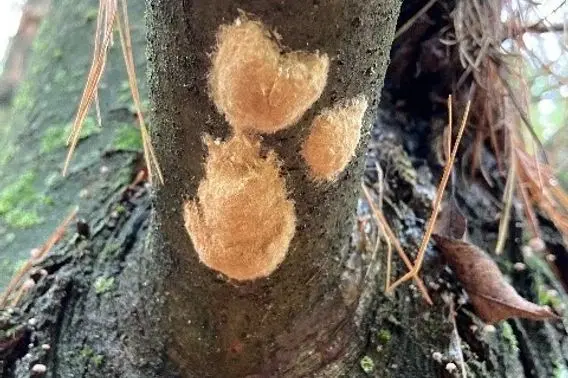
|
Eggs |
Fuzzy tan masses on bark, furniture, fences |
Up to 1,000 larvae per patch; hairs may irritate skin |
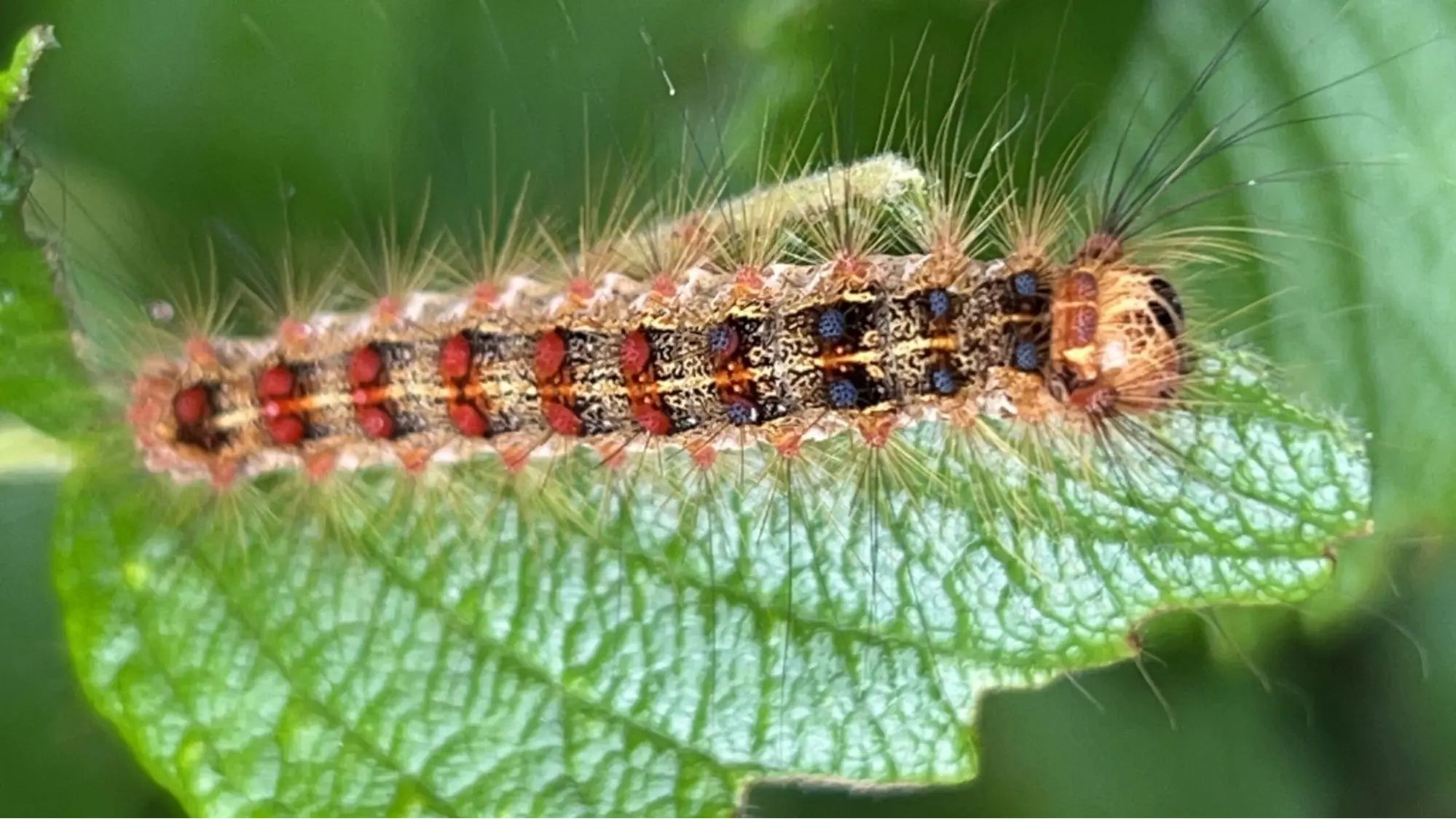
|
Caterpillars |
Hairy, dark bodies with blue and red spots |
Can consume over a square metre of leaves each - fast, visible defoliation |
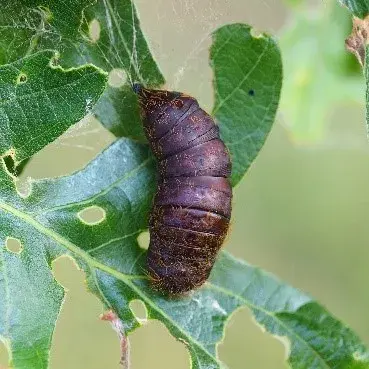
|
Cocoons |
Tan, silk-like, often hidden in crevices |
Signal imminent moth emergence and next egg cycle |
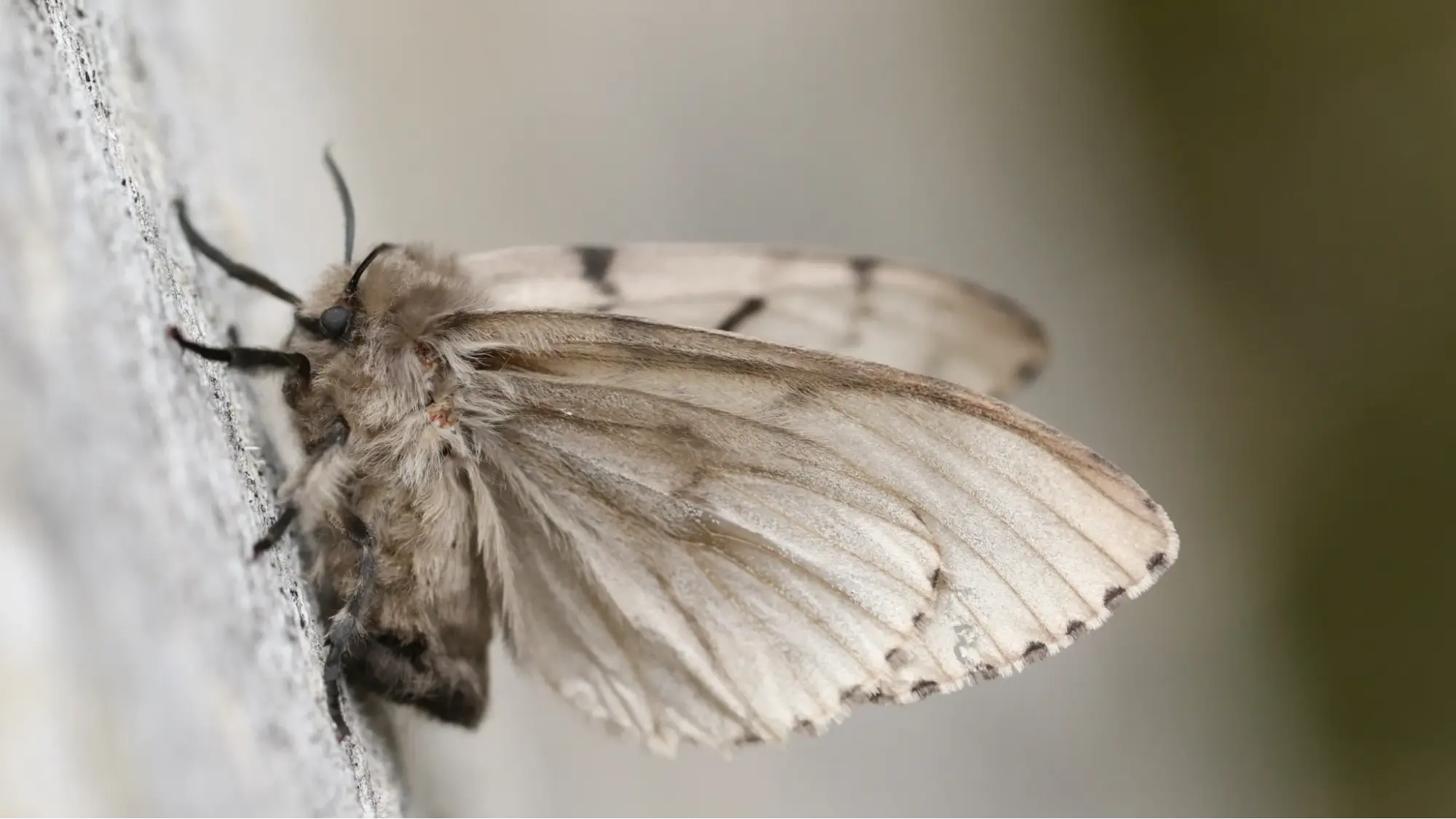
|
Moths |
Beige females, brown males flying in summer |
Female moths don’t fly far but lay hundreds of eggs - one moth means more nearby |
The feeding frenzy does more than strip trees of their foliage. The trees are left weak and more susceptible to attack from other insects, diseases, and stressors such as drought. Moths target oaks, maples, birch, and poplar which means their impact extends beyond natural areas to residential yards, school yards, and commercial properties.
A Local Crisis with a Growing Impact
The Spongy Moth, originally introduced from Europe, has been present in Ontario for over 60 years. The province saw its first major outbreak in the 1980s, and since then, infestations have become increasingly common. These outbreak cycles typically occur every 5 to 10 years and can persist for 2 to 4 years at a time.
The summer of 2021 was a wake-up call. Spongy Moths stripped large areas of High Park and the University of Toronto’s Scarborough campus. In just one year, the number of damaged trees reported by the Toronto and Region Conservation Authority doubled, from 155 to 306. And it’s not just the trees that suffer. The cost of removing weakened or dead trees, treating property damage, and replacing lost canopy can run into the millions.
In response, the City of Toronto has significantly scaled back its aerial spraying program. That means the responsibility now falls more than ever on homeowners and local businesses to take proactive steps.
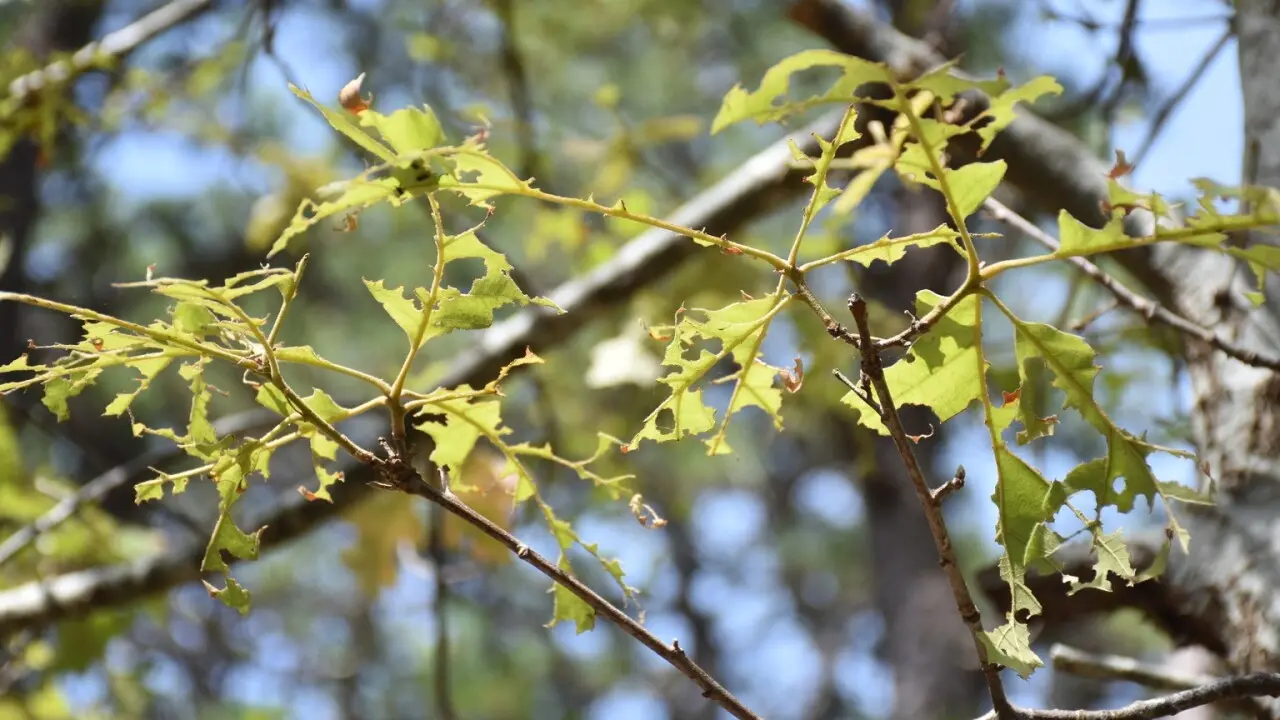
Common Symptoms of Spongy Moth Infestation
|
Symptom |
Description |
|
Egg Masses |
Fuzzy, tan patches on bark, fences, sheds, outdoor furniture |
|
Leaf Damage |
Chewed or skeletonized leaves, especially on top canopy |
|
Frass (Droppings) |
Dark granules under trees — looks like sawdust or black pepper |
|
Caterpillar Sightings |
Hairy, dark larvae with distinctive blue and red dots, visible on structures |
|
Silken Cocoons |
Tan, silk-like casings in tree crevices, behind shutters, under branches |
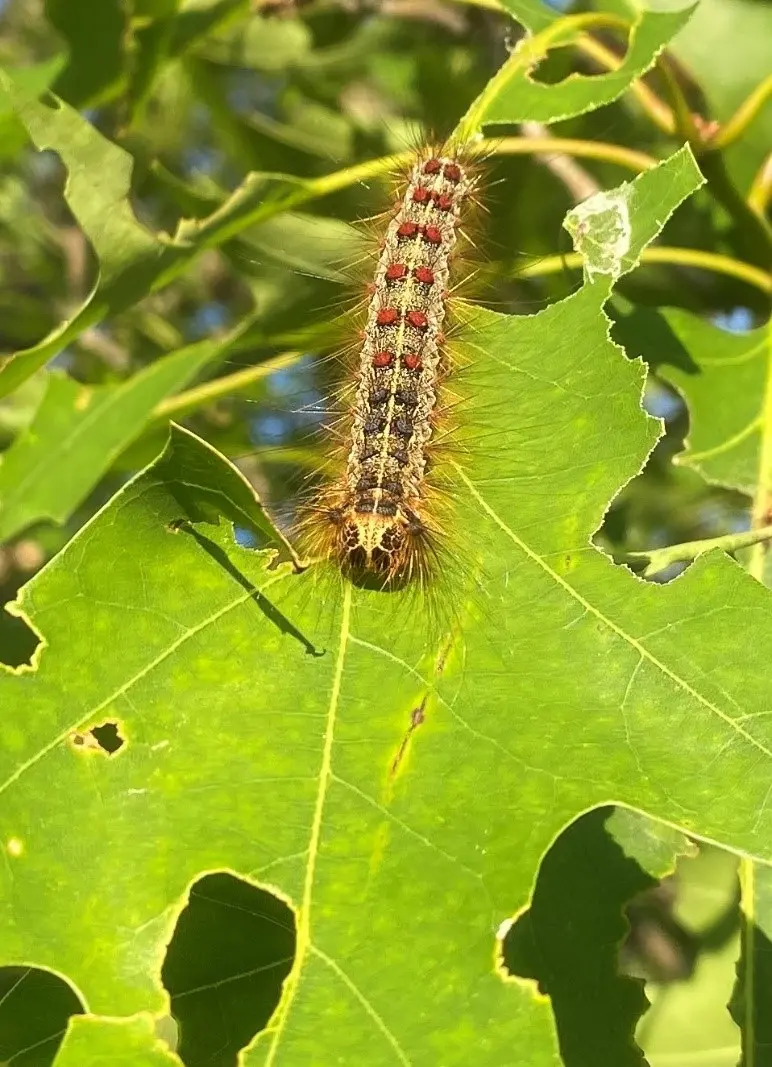
Spongy Moth – Favored vs. Unfavored Tree and Shrub Species
|
Favored Tree & Shrub Species |
Unfavored / Resistant Species |
|
Oak (esp. White Oak) |
Ash |
|
Maple (esp. Sugar Maple) |
Dogwood |
|
Birch |
Tulip Tree |
|
Aspen |
Sycamore |
|
Poplar |
Locust |
|
Willow |
Catalpa |
|
Basswood |
American Holly |
|
Apple / Crabapple |
Cedar & most conifers (mildly resistant) |
|
Blue Spruce (late-stage infestations) |
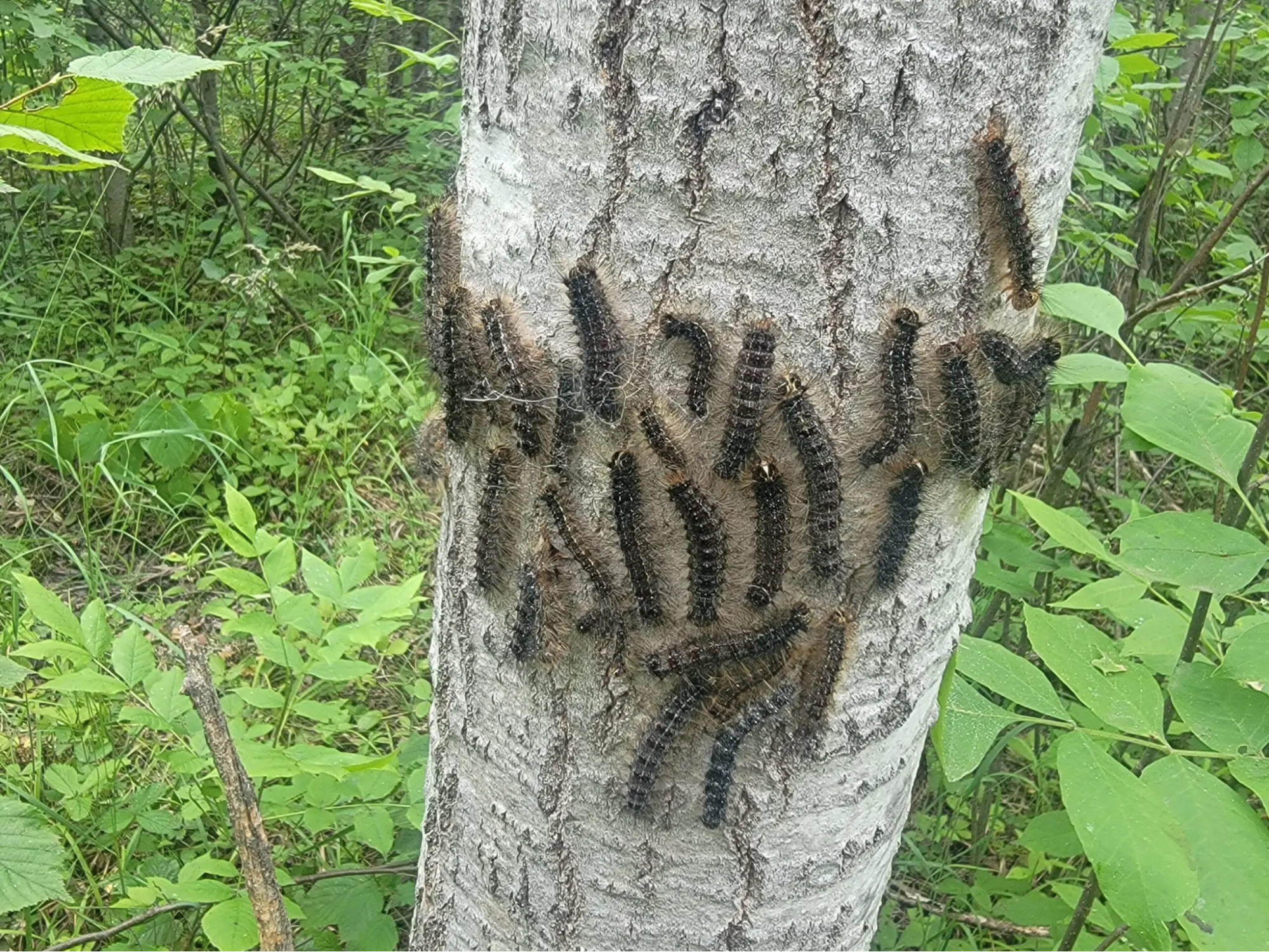
Natural Predators: Nature’s Built-In Defense
Spongy Moths aren’t completely unchecked - several native species in Canada help keep their numbers in balance.
Birds like blue jays, orioles, and chickadees feed on caterpillars and even target their egg masses.
Small mammals such as mice, chipmunks, and skunks have also been known to consume both caterpillars and cocoons.
In addition to predators, Spongy Moth populations are vulnerable to NPV (nucleopolyhedrosis virus) - a naturally occurring pathogen that causes infected caterpillars to liquefy and die. In June 2021, the Toronto and Region Conservation Authority (TRCA) observed signs of NPV actively spreading through local moth populations, offering a rare and powerful glimpse of nature fighting back.
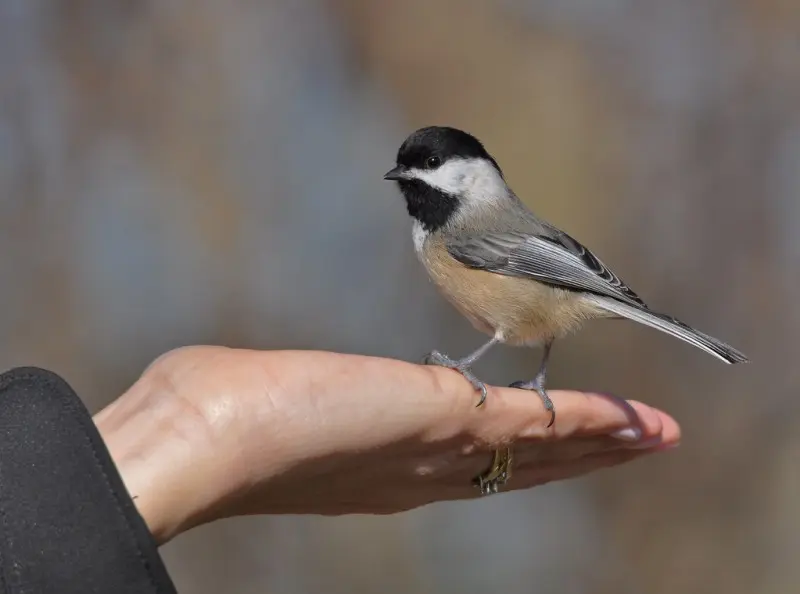
How Tree Doctors Helps You Stay One Step Ahead
Protecting against the Spongy Moth isn’t about reacting to the sight of a few caterpillars - it’s about early, preventative action. At Tree Doctors, our ISA-certified arborists follow a seasonally timed, science-backed pest management strategy that includes:
- Inspection and monitoring: Early identification of egg masses and larval clusters in spring
- Manual removal: Safe, targeted elimination of eggs, cocoons, and feeding larvae
- Biological treatments: Environmentally responsible Bacillus thuringiensis kurstaki (BTK) applications, precisely timed when larvae are most vulnerable
- Tree health care: Strengthening trees' natural resistance through proper fertilization and watering, especially during drought conditions
We also work with property owners to reduce breeding sites, from cleaning outdoor furniture to managing host plants nearby.
But this effort extends beyond individual properties. Treating Spongy Moth infestations helps protect entire neighbourhoods. These caterpillars can travel easily by “ballooning”—spinning silk threads and drifting on the wind from tree to tree. That means what you do - or don’t do - affects your whole block.
Why Now Is the Time to Act
May is a critical window in the Spongy Moth’s life cycle. Egg masses are hatching, and young caterpillars are beginning to feed. Waiting too long can mean losing control of the population until next year. And with this spring’s cool, rainy weather delaying natural predators, conditions make professional intervention more important than ever.
At Tree Doctors, we don’t just treat the symptoms, we protect the long-term vitality of your trees. Our certified specialists are trained to spot early-stage infestations that most homeowners overlook. And by the time visible damage appears, it’s often already too late.

Don’t Wait for the Damage to Spread – Act Together
Spongy Moth infestations don’t stay put. Caterpillars can “balloon” on wind currents, spreading easily from one property to another. So even if you treat your trees, the threat can return, unless your neighbours act too.
Here’s a key insight from behavioral science: people are far more likely to take action when they know others are doing the same. If you’re spotting egg masses or caterpillars now, chances are your neighbours are seeing them too.
The best defense is a shared effort. When multiple properties in the same area schedule inspections or treatments together, Tree Doctors can offer a reduced group rate, protecting more trees while making it more affordable for everyone.
Toronto’s trees are more than just part of the scenery, they're vital to our city’s health, providing clean air, shade, and habitat for wildlife. By acting together, we help ensure our urban forest thrives for generations to come.
Book your Spongy Moth inspection with Tree Doctors today. Let’s protect Toronto’s trees together.









